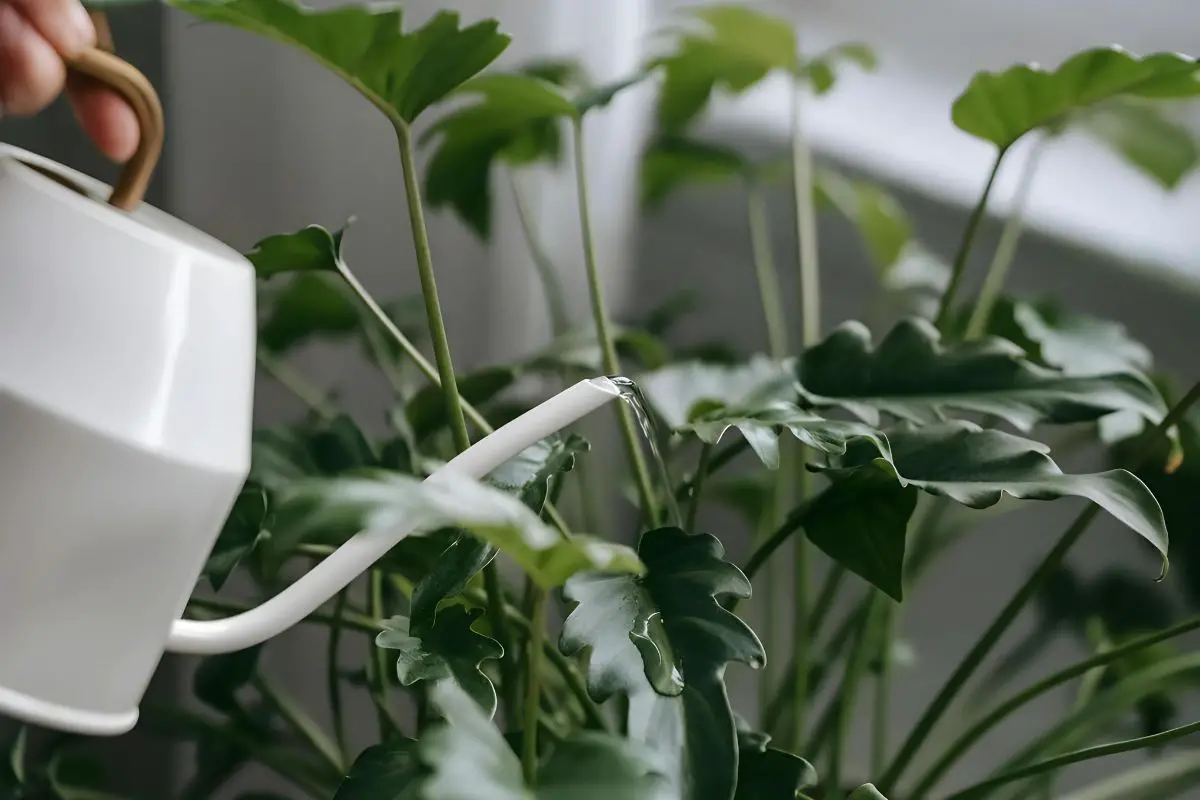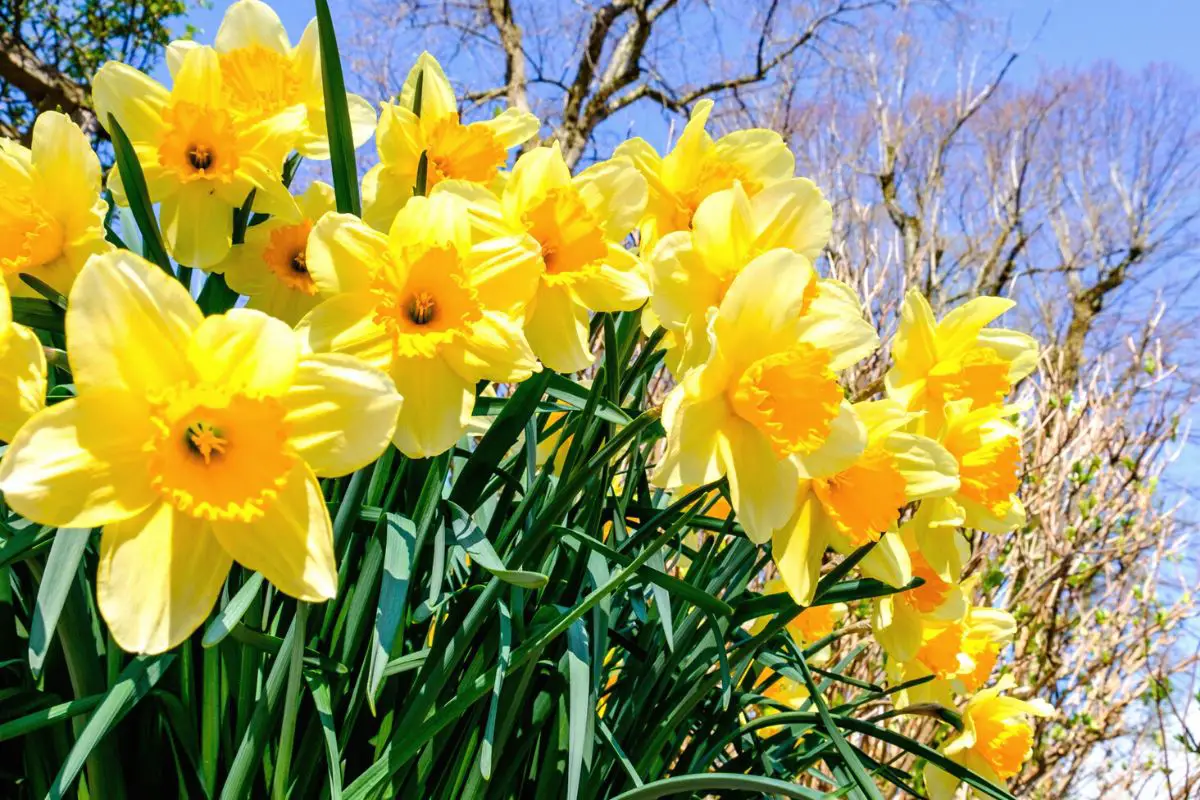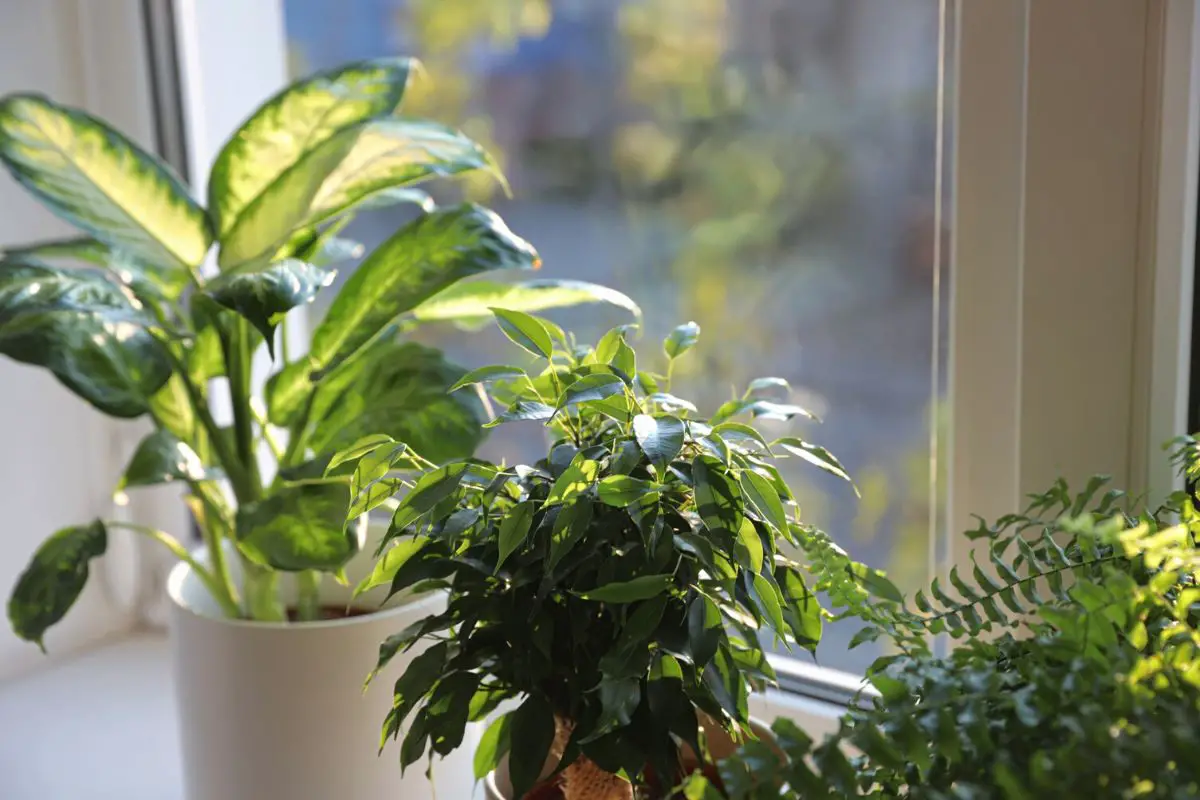Daffodils are cheerfully colored spring flowers that most people associate with the arrival of spring and the Easter holiday. This flower comes in many varieties, each with its own beautiful, distinct look. They can give your home a cheerful feeling, so knowing how to care for them is vital to everyone’s happiness.
When caring for daffodils indoors, these are the care instructions that you need to know:
- Providing adequate light
- Managing temperature and humidity
- Proper watering
- Choosing the right soil
- Fertilization for optimal growth
- Protecting your daffodils from pests and diseases
As your daffodil begins to bloom, you need to have the correct knowledge to keep it happy and thriving. Indoor daffodil blooms last only 6 to 10 weeks, so you want to ensure they have the best lifespan possible. This article will provide you with the knowledge you need to keep your indoor daffodils healthy and happy.

1. Providing Adequate Light
When we think of daffodils, we imagine those calendar photos of daffodils in sunny fields, looking bright and healthy. These photos are proof that giving your daffodils the correct lighting is vital to their growth and health.
Improper lighting can cause your plants to wither or die. So to prevent this from happening to your daffodils, let us discuss their proper lighting.
As those calendar photos show, daffodils flourish well in full sunlight. Now, unless your house comes without a roof, bathing a plant in full sunlight is not possible indoors. So daffodil experts and enthusiasts place their indoor daffodils next to the sunniest window in their homes.
Keeping daffodils in bright, filtered light keeps them looking and feeling their best. This type of lighting prevents the daffodil from burning or its blooms fading in color. If you were to keep them in a shadier spot, they wouldn’t be as vibrant, and they wouldn’t grow as well as they do in bright, filtered light.
Also, make sure you rotate your daffodils from time to time. Daffodils lean toward their light source, meaning if you don’t turn it, the plant will not grow to its fullest potential. I recommend giving it a quarter turn every time you water it so it’s easier to remember.
2. Managing Temperature and Humidity
Daffodils are a flower associated with springtime. So, it should be no surprise that outdoor daffodils enjoy the warmer weather and don’t care for the colder months. However, indoor daffodils get to enjoy both!

Let us see why:
The Cold Treatment
The cold treatment is how the daffodil starts its new life cycle. The cold treatment process can seem long and daunting, but it’s well worth it once you see those beautiful daffodils begin to bloom.
How does the cold treatment progress go?
Let us dive into the details:
- Cold treatment lasts about 8 to 10 weeks. This process starts with placing the daffodil pot in a dark room with 40-45 °F (4.4 to 7.2 °C) temperatures. Unheated basements make an excellent spot for this process. However, some daffodil enthusiasts prefer to use a refrigerator.
- Keep your daffodils slightly moist throughout the process.
- When your daffodil shoots become about two inches (5 cm) tall, you can move them to a different location. The new spot shouldn’t be more than 50 °F (10 °C).
- Start giving your daffodils low light, then move the pot a little closer to a sunny window each day. Don’t forget to turn the pot to promote consistent growth.
- When the daffodil reaches full bloom, keep them in bright, filtered light and watch them thrive.
The Perfect Temperature
After the daffodil’s cold treatment, it’s time for it to start blooming again. Keeping the temperature between 50 and 70 °F (10 and 21 °C) while the daffodil is in bloom is the best. These temperatures help prolong your daffodil’s bloom.
The Ideal Humidity
The daffodil isn’t fussy when it comes to moisture. The average indoor humidity of 40-50% is perfect for the daffodil. In the colder months, keep the humidity up using a humidifier.
The Cold Period
Indoor daffodils need a “cold period,” which typically starts in autumn. Now, the cold period is different from the cold treatment. The cold period allows daffodils to set their roots. You can also force them to bulb during this time.
Once they have bulbed, it’s advisable to store your daffodil bulbs in a nylon stocking or a mesh vegetable bag. Keep the bulbs stored somewhere they aren’t exposed to dampness, direct sunlight, freezing temperatures, or excessive heat. Storing them in a safe area until you’re ready for the next process is vital.
Bulb Curing
Bulb curing goes on until the next planting season. Once the planting season rolls around, you must first inspect your bulbs. If any of them didn’t make it through the storage period, discard them. You’ll want to replant your bulbs 4 to 6 weeks before the first frost in your area.
There’s a lot of crucial work that goes into keeping the temperature and humidity right throughout the daffodil’s entire lifecycle when forced to bloom indoors. That’s why it’s highly unlikely for the bulbs to bloom again the following year.
3. Proper Watering
The expression “April showers bring May flowers” means that the more it rains, the more spring plants and flowers will bloom. However, too much rain can cause the plants and flowers to flood and die.

To ensure you’re not overwatering your daffodils, check the potting soil once or twice a week. If the top inch (2.5 cm) of soil feels dry when you touch it, it’s time to water your daffodils thoroughly. However, there’s more to this than just watering.
Daffodils don’t do well sitting in too much water. A soggy daffodil is an unhappy daffodil, and we want to avoid this. Ensure the potting mix has excellent drainage and allow the pot to sit on a drip tray after watering to let the excess water out of the drainage holes.
Keeping a solid watering for your daffodil is necessary to guarantee the buds blooms fully.
4. Choosing the Right Soil
Soil is one of the most crucial aspects of having healthy and happy plants. The wrong soil can kill your plant before you’ve even had a chance to name it. So, knowing which soil type is best for your daffodil is essential.
Daffodil bulbs grown indoors need a well-draining substrate. If your soil has good drainage, you’ll be helping prevent the potential for your daffodil to become waterlogged and develop root rot. Avoid using garden soil, as it can be too dense. This soil should also have a slightly acidic pH of 6.0.
You can grow 3-5 bulbs together in a 6-inch (15 cm) pot but they shouldn’t be touching each other. Place the bulbs 4 inches (10 cm) deep into the soil and cover them with enough soil to reach half an inch (1.27 cm) below the mouth of the pot.
You can bury the bulbs 7 inches (18 cm) deep if grown in a pot at least 10 inches (25 cm) deep. In this case, you can wait until the top 2 inches (5 cm) of the soil is dry before watering again.

5. Fertilization for Optimal Growth
Fertilizing isn’t a necessity for your indoor daffodils because the bulbs store enough energy to support the buds. However, some daffodil experts still use it as a way to help their daffodils until the bloom fades.
If you decide to go the fertilizer route, it’s recommended to fertilize your daffodil every 2-3 weeks. Choose a fertilizer rich in potassium and phosphorus to support flowering. You can go for a 5-10-10 liquid fertilizer diluted to half-strength.
Alternatively, you can apply a slow-release granular fertilizer only once when the foliage emerges 2 inches (5 cm) from the ground.
6. Protecting Your Daffodils from Pests and Diseases
Flowers are like an all-you-can-eat buffet for different types of bugs. That’s why you notice little chunks taken out of flowers in the wild. Even indoor plants can become a buffet for pests. So how can you avoid this issue from occurring?
The first thing is knowing what bugs you must watch out for. Daffodils attract aphids, bulb flies, bulb mites, and thrips. These bugs love to chow down on daffodil bulbs. Their mealtime can lead to your daffodil becoming rotten and withered, which leads to a dead plant.
How to Combat These Pests
When it comes to pest control for your daffodils, you can opt for either a natural or chemical solution:
The Natural Solution
The natural solution starts with the thorough inspection and isolation of the infested daffodil bulbs. This will help prevent the spread of the bugs to other bulbs. Wiping or washing the bulbs can also remove early bug infestations.
However, for later infestations, you’ll need to take more drastic action depending on the type of pest:
- Bulb mites: If you bought cured bulbs and found they’re infested with bulb mites, you can dip them in water at a temperature of 120 °F (49 °C) for two minutes.
- Bulb flies: Soak your dormant bulbs in 111 °F (44 °C) water for three hours, and this will eliminate maggots potentially hiding within the bulbs. Considering the long soaking time, make sure to maintain the temperature. Avoid hotter temperatures as they can damage the bulbs.
The natural solution is excellent for daffodil enthusiasts who take a more organic approach to growing their flowers. It’s also a fantastic option for anyone who is more environmentally conscious and strives to avoid the use of harmful chemicals.
Biological Control
If pests like aphids and thrips have taken over your daffodils after you’ve already planted them, you can use their natural predators, such as ladybugs. However, it can be troublesome if the ladybug population in your home goes out of control.
Chemical Solution
Sometimes the natural or biological solutions don’t work, or maybe you want to skip it and go straight to the chemical solution. Either way, the chemical option is there if you need or prefer to use it.
Insecticides kill bugs without harming your plant. For daffodils with pest problems, insecticides such as Endosulfan, Malathion, or Imidacloprid kill aphids, flies, mites, thrips, and other bugs, on contact. Insecticidal soap can also get the job done.
Be warned: Organophosphorus pesticides that target mites may kill them on contact, but they also kill the bugs that target mites. So, the chemical route can lead to you eliminating the good bugs alongside the nasty ones.
There’s still a lot about pesticides that remains unknown, such as their impact on the environment and on people’s health. So, carefully read the instructions and warnings on the pesticide’s packaging to learn about all the potential risks of using a given product.
Other Problems That Affect Your Daffodils
Flowers are prone to different diseases. For daffodils, that disease is basal rot. Also known as bulb rot, the disease occurs when the plant experiences failed shoots or stunted growth. The plant’s leaves turn from yellow to red or purple before wilting off and dying.
How to Identify Basal Rot
If you notice your daffodil bulbs growing a pink or white fungus, that’s a clear indication of basal rot spreading on your daffodils. For the daffodil plant specifically, basal rot causes its roots to turn brown and eventually die.
Controlling and Preventing Basal Rot
The best way to control and prevent basal rot starts with the bulbs. Using disease-free bulbs is the best way to prevent the disease.
Other effective ways include:
Proper Planting
Proper planting is another way to prevent basal rot from occurring. Ensure adequate spacing between the bulbs and always use a potting mix with good drainage and aeration to avoid waterlogging. It also includes careful digging and thoroughly curing the bulbs before putting them into storage.
Adequate Plant Care
Proper care will also prevent basal rot. Good plant care means avoiding overwatering your daffodil, preventing over-fertilizing, and not overcrowding your plant.
So always ensure that your daffodil isn’t soaking in excess water, use the proper amount of fertilizer (or no fertilizer at all), and allow your plant plenty of space to grow.
Final Thoughts
Growing daffodils indoors requires knowledge and dedication. Raising daffodils isn’t a venture to embark on lightly, and it’s essential to ensure you keep your daffodils in the best health possible.
When caring for daffodils indoors, remember to keep these factors in mind:
- Daffodils like bright, indirect light.
- Average temperatures and humidity will keep them happy.
- Do not overwater your daffodils, or they will get soggy and sad.
- The correct soil and fertilizer can help your daffodils bloom and stay vibrant.
- Protecting your daffodils from pests and other problems can help them live to their fullest potential.







